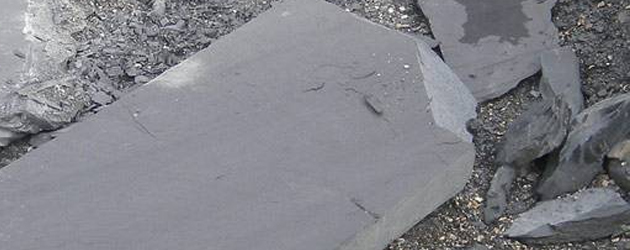PORPHYROID OF VALLEVE

This dark gray porphyroid, also known as Valleve slate, surfaces in the upper Val Brembana, on the slopes of Mount Pegherolo at about 1700 meters above sea level.
The local use of Valleve slates as cover material is lost in the mists of time.
This sedimentary rock belongs to the group of rocks called Wengen formation, dating back to the Triassic period (220-215 million years ago) and is also found in many areas of North-Eastern Italy.
In that period the Lombard area was submerged by a shallow sea called Tethys Sea, separating Europe from Africa and the latitude was closer
to the Equator than it is now, with warmer, tropical weather.
The setting was that of the carbonate platform: large seamounts, furrowed by depressions and characterized by the continuous deposition of tiny calcite crystals, precipitated by the ocean waters.
Both sediments from the platform and those rich in silicates, coming from the nearby continent deposited in the Pegherolo basin.
The result of this double contribution can be seen now in the composition of the Dark Gray Porphyroid, composed primarily of quartz and other silicates.
The poor circulation of oxygen has promoted the development of very reducing conditions, that cause the dark coloration of the rock.

